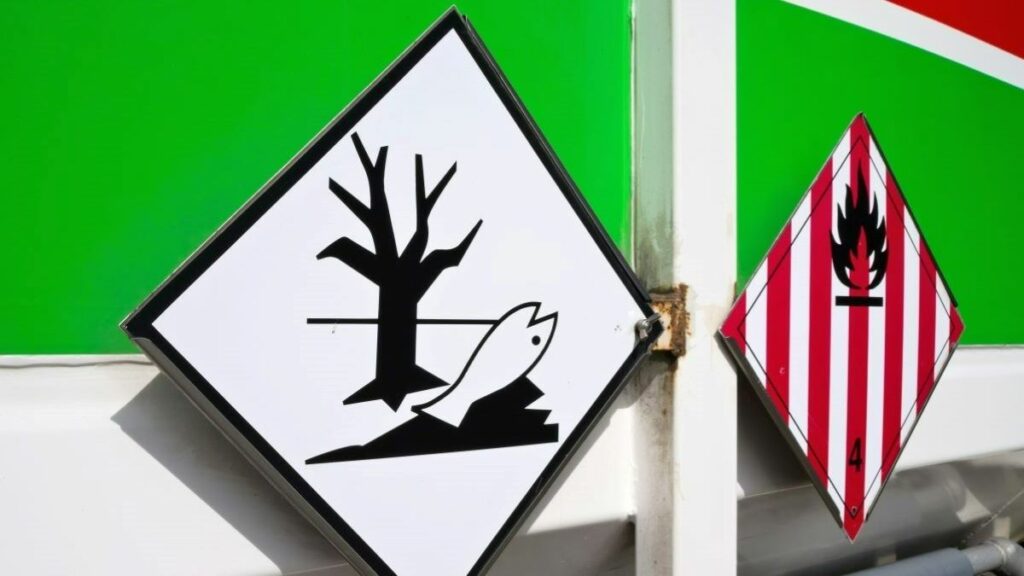Featured image by Bjoern Wylezich
Dangerous goods are materials that pose a risk to health, property, and the environment. These include flammable substances like chemicals, lithium-ion batteries, or explosives. Dangerous goods can be solid, liquid, or gas.
Shipping dangerous goods can make anyone feel anxious. Follow the tips here and ship your products safely.
RELATED ARTICLE: HOW INTERNATIONAL SHIPPING CAN BOOST YOUR BUSINESS
1. Know Your Hazardous Products
It is the shipper’s job to classify a particular package as dangerous or not to the carrier. In addition, they must mark it correctly on the package so others handling the cargo know the potential hazard the goods may have.
According to the UN Committee of Experts on the Transport of Dangerous Goods, dangerous goods are classified into nine classes based on the risks they constitute. These classes are further divided into substances, from those having minimum hazardous effects to those that are fatal.
2. Follow Proper Packing Protocols for Dangerous Goods
As a shipper, you must ensure the cargo’s safety when transferring your goods whther by air, over land, or on the ocean. After identifying which class of hazardous goods you want to transport, you can prepare the packing accordingly.
Typically, shippers use 4G and 4GV fiberboard boxes when shipping dangerous goods. These are UN-approved packaging. They are popular choices for shipping. Though both the boxes are almost the same, 4G and 4GV packaging are slightly different.
In 4G packaging boxes, when testing, the replacement contents must be exactly the same in terms of weight (for solids) and density (for liquids) as the original products.
On the other hand, 4GV packaging permits non-specific inner packaging, allowing only one-half the gross weight of the original contents. That is, you can choose any inner packaging of your choice. For example, on a 10 kg product, such as glass bottles, drums, plastic bottles, and such, you can use cushioning along with other packing accessories. This will permit you 5 kg for the inner packaging.
For the outer layer packaging, you should use high-quality double-walled boxes to avoid damage. Whether you choose 4G, 4GV, or other boxes for packaging, each of them must have undergone drop tests. This is how the UN approves the right box for packing dangerous goods. So research, plan, and learn packaging tips. Know whether your selected box can withstand the weight of other boxes and whether or not it survives the drop test.
RELATED ARTICLE: 4 TOP PACKAGING TIPS TO AVOID SHIPPING DAMAGE
After all that, it is your job to ensure the boxes are marked and labeled properly. Markings should mention the weight, class, and division of the dangerous goods you are transporting so everyone who handles your packages will be aware of the hazard and handle the cargo accordingly.
Another important point to remember when packing your goods is to keep certain items or materials away from each other. For instance, if you’re transporting combustible liquids, keeping any kind of electrical equipment away from them is a good idea.
3. Learn the Shipping Rules and Regulations That Apply to Dangerous Goods
Whether you’re a shipper or a carrier, there is plenty of information regarding shipping rules and regulations available online and for free. You can find out whether or not the goods you’re planning to ship are dangerous and if shipping them is even possible.
Another important point is that there are different rules and regulations based on whether you’re shipping via air, road, rail, or ocean. Check and follow the procedures to avoid any difficulties when declaring your goods.

Image by Dashu83 via Freepik
4. Find the Right Container for Your Dangerous Goods
If you’re transporting dangerous goods, stacking them in a cargo container is better than other methods. Carriers will give you three or four free days after discharge from the vessel to ship to your destination. But if your cargo runs late, you’ll have to pay additional fees.
But quick transportation of your goods is not guaranteed. So choose the perfect container so your goods will be safe and secure. You can also select freight forwarding services that will organize, store, distribute, and provide documents for dangerous goods.
RELATED ARTICLE: 5 THINGS TO KEEP IN MIND WHEN CHOOSING A FREIGHT FORWARDER
If you are also transporting non-dangerous materials in the same shipment, placing your hazardous goods near the container door is a good idea. This way, in the event of leakage or a fire, the hazardous materials can be immediately accessed and thrown out without damaging other goods.
5. Prepare the Necessary Documentation
For every product, there is a different document to prepare. So first, identify which goods are listed as dangerous and which are not so as to make it easier for you to prepare. You’ll find that some items may seem harmless to you, but they can be, in fact, quite lethal.
The ones you need to watch for are goods such as flammable liquids, oxidizers, oxygen tanks, poisons, radioactive materials, and chemical substances. For instance, it may surprise you to know that lithium-ion batteries, aerosol sprays, hair sprays, perfumes, wine, household cleaners, pesticide products, and the like are dangerous goods. Moreover, each of them requires a different document.
Make sure you have the proper documents and certificates if you’d like to ship your goods without any trouble. Undeclared dangerous goods will have to face the consequences. Not only that, but someone could get hurt while transporting your shipment if they don’t know they are handling dangerous goods.
6. Provide Proper Training to Your People
Since you’re reading this article, you probably work in some facet of the shipping industry. As you probably know, many people are involved in the process, from packing and labeling to storing and loading.
Only those who are well-trained and who are aware of the risks and dangers should handle hazardous goods. Therefore, train every person directly or indirectly involved in the process so they know what to do in an emergency. These people include cargo handlers, truck drivers, machine operators, packers, administrative staff, and others.
The Bottom Line
Shipping dangerous goods requires a high level of planning. Whether you’re the shipper or the carrier, you need to ensure perfect packaging and labeling and follow the rules and regulations of whichever mode of transport you use.
Train your people and educate them on handling the effects of dangerous goods should it come to a worst-case scenario. You must also have all the necessary documents and certificates ready to avoid discrepancies. In the end, your people are essential to the entire process.
RELATED ARTICLE: TIPS FOR IMPECCABLE ECOMMERCE CUSTOMER SERVICE


